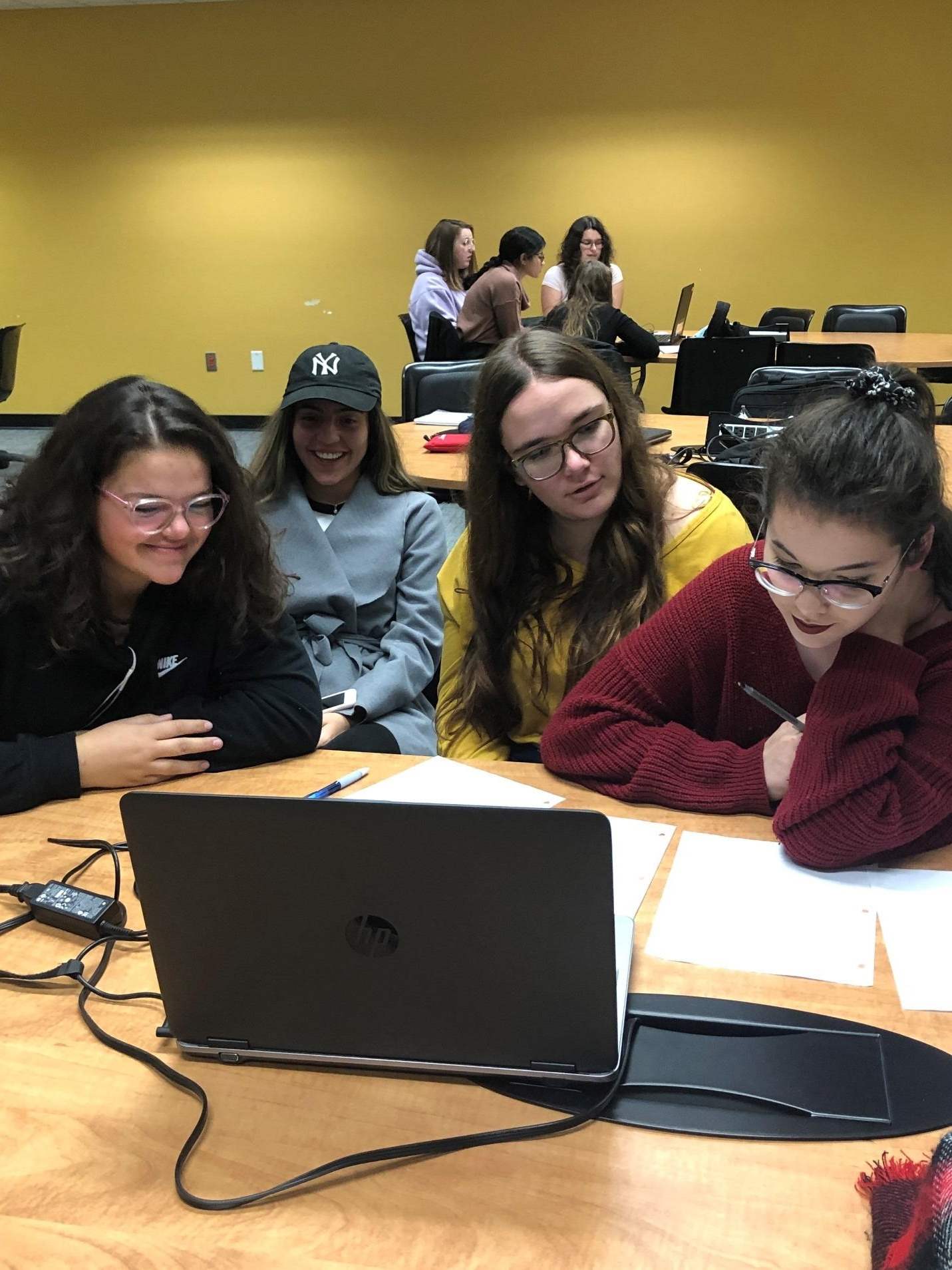In 2017 and 2018, I organized 2 very successful trips to Vancouver with my students, enrolled in the Language profile of Cégep Limoilou’s Arts, Letters and Communication program. Because this type of cultural exchange adds great value to the career path of our students, but also to that of students in British Columbia, in the fall 2019 semester, I organized a virtual encounter to continue forging ties between these young people living on both sides of the country.
As part of their Carnet de voyages: introduction course, my students were able to virtually meet with students from the University of British Columbia (UBC) Bachelor of Education in French as a Second Language (FSL) program via Skype to discuss the challenges of learning a second language and to learn more about the different school systems (colleges in Quebec versus universities in British Columbia).
Shared Learning Experiences
At the beginning of the semester, the course zooms in on culture across Canada. My students research cultural and linguistic codes; for example, Canadian expressions or cultural contexts that are specific to certain provinces or even cities. In pairs, they find examples and share those with classmates. The videoconference meeting allowed my students to connect with students in another province that they normally would have no contact with and learn through direct observation about similarities and differences present in their respective language learning.
On the other hand, my students were also able to take up a teaching role as they communicated in French with the UBC students and explained the CEGEP system to them. This role reversal was interesting to observe and an empowering experience for them, since the UBC students are several years older and training to be teachers.
In sum, the conversations allowed:
- both student groups to learn more about topics they had addressed in their respective classes
- students to act as teachers and learners
- students to practise their language skills and increase awareness of language learning challenges
- experiential learning to occur, based on a hands-on intercultural exchange
Setting up video conferences
I had the idea to set up virtual exchanges when I realized it is possible to have multiple people on a Skype call. I decided to set up videoconferences using this software because I was already familiar with it and it comes installed with Office 365.
I reserved an active learning classroom because it comes equipped with interactive whiteboards, which I hoped to use to project the calls on. Unfortunately, the workstations connected to the interactive boards did not have a webcam. To keep things simple, I borrowed laptops from the library and set up groups of 4-5 students in different parts of the room. The students at UBC set up in a similar fashion, but in different rooms, which was helpful for sound quality.
I developed a set of discussion questions to guide the conversations while also encouraging spontaneous interactions. I recommend keeping group sizes small. This gives every student an opportunity to speak. We also had some bandwidth issues as students accessed the Internet wirelessly. Using wired connections and setting up students in different rooms could improve video and audio quality.
Student feedback
Student feedback was very positive:
This exchange was extremely enriching for me. In fact, I wish it had lasted three times as long. It was incredibly interesting to hear the views of English-speaking Canadians on the French language and Quebec culture. It was also exciting to discuss our shared challenges as second-language learners, only to discover that we are so similar, despite all our differences — Simone
It was moving for me to see individuals who do not have French as their first language fall in love with it. This exchange reminded me of the importance of communicating and sharing with people who are different from us. It reminded me that we cannot judge others without trying to understand them. Moreover, I realized, thanks to this exchange, that each province has its own preconceived ideas of others and that it is essential to debunk them — Frédérique
Prior to the exchange, I was very skeptical about its usefulness to my studies. I was very pleasantly surprised by these conversations and I am delighted to have found out a little more about how they learn — Justine
Takeaways
The strength and pertinence of an exchange, whether virtual or in person, are directly related to its human factors. Although other video conferencing platforms might offer more bells and whistles, the simplicity of a straightforward Skype call allowed students to focus on that human interaction. Their testimonials confirm they perceived this as a valuable addition to their work on Canadian provinces and territories. In future iterations, I would like to expand the scope of the virtual exchange, for example by offering students more than one opportunity to communicate virtually so they can connect even more meaningfully, perhaps even converse about sociocultural issues today.



